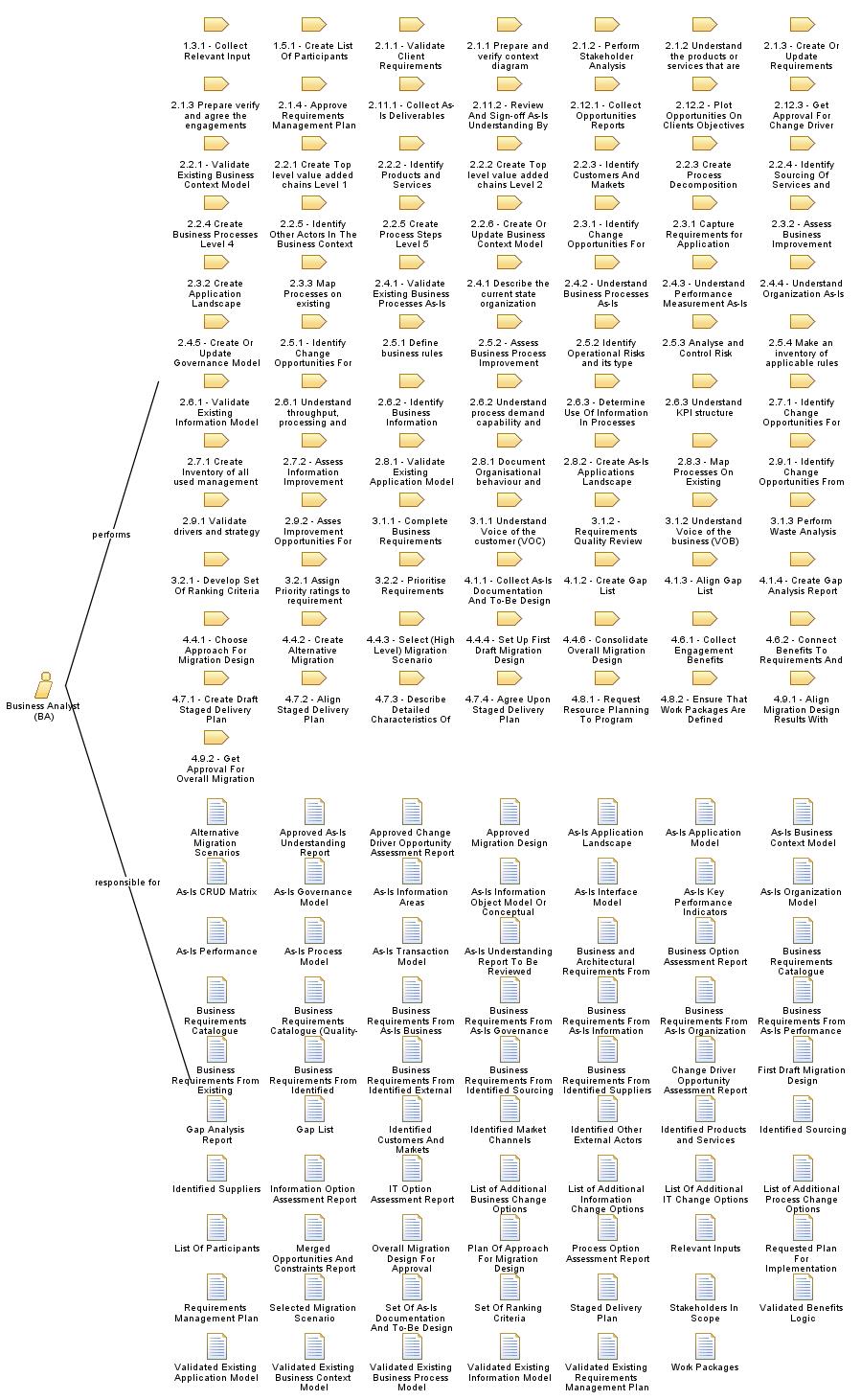| Role: Business Analyst (BA) |
 |
|
Relationships
Main Description
The Business Analyst is the prime role for performing the activities as described in this Business Analysis method document. The core competencies of the Business Analyst are:
The Business Analyst is the entry level for Business Analysis. For this level the Business Analyst may be qualified as being Information Analysis focused or being Business Process Analysis focused. This will allow for more easy access to the Business Analysis field for persons with a software development or process development background. Note that the requirement for having subject matter expertise still holds and the Business Analyst should have acquired significant expertise in a certain industry or market segment. After having following sufficient training and having gained about two years of Business Analysis experience certification can be acquired leading to the title of Certified Business Analyst. The Certified Business Analyst is the intermediate certification level for Business Analysis. This level indicates that the BA not only has sufficient experience in the Business Analysis field but also that there is a balance in being Information Analysis oriented and Business Process focused. The balance does not need to be exactly 50 - 50 but the BA should be capable of performing Information Analysis activities as well as Business Process analysis & modelling activities. The Senior BA is the third certification level for Business Analysis. The level indicates extensive experience in the Business Analysis field, being proficient is both Information Analysis and Business Process Analysis/Modelling and preferably subject matter expertise in more than one field. For related certified roles in the Business Analysis field see: Business Transformation Consultant and Business Architect. Business Consultant: |
| Copyright Capgemini, 2006. All Rights Reserved. |
